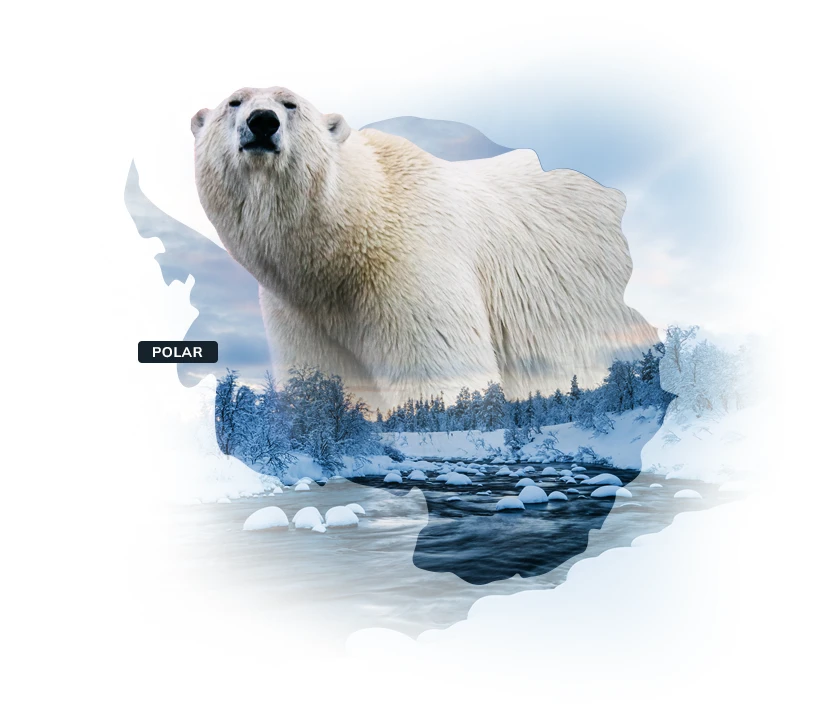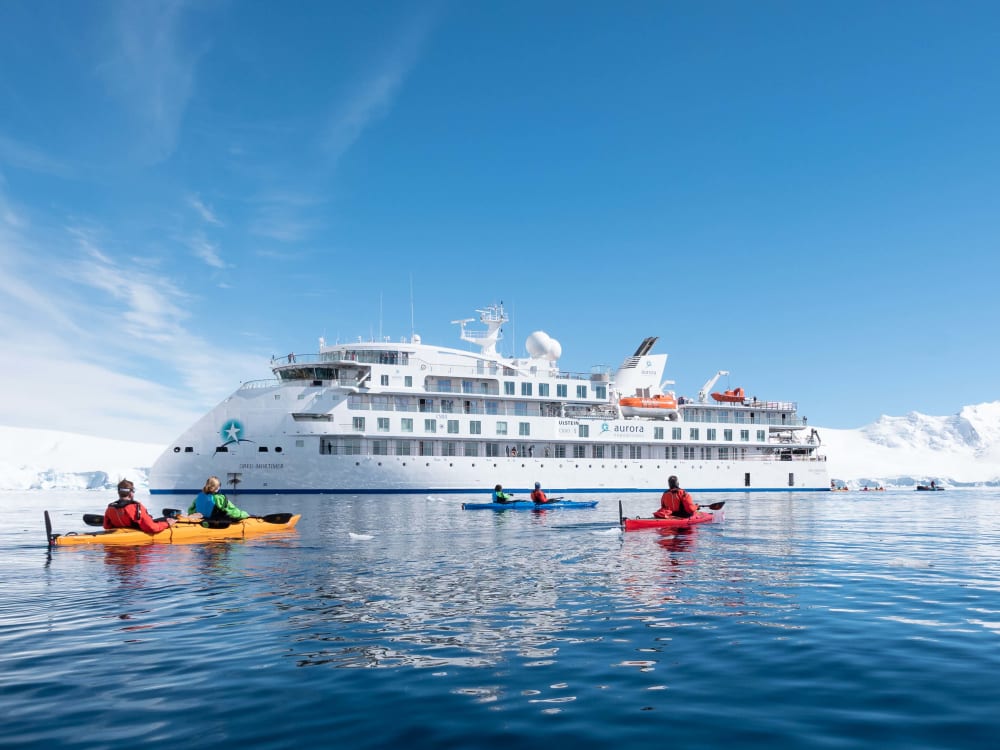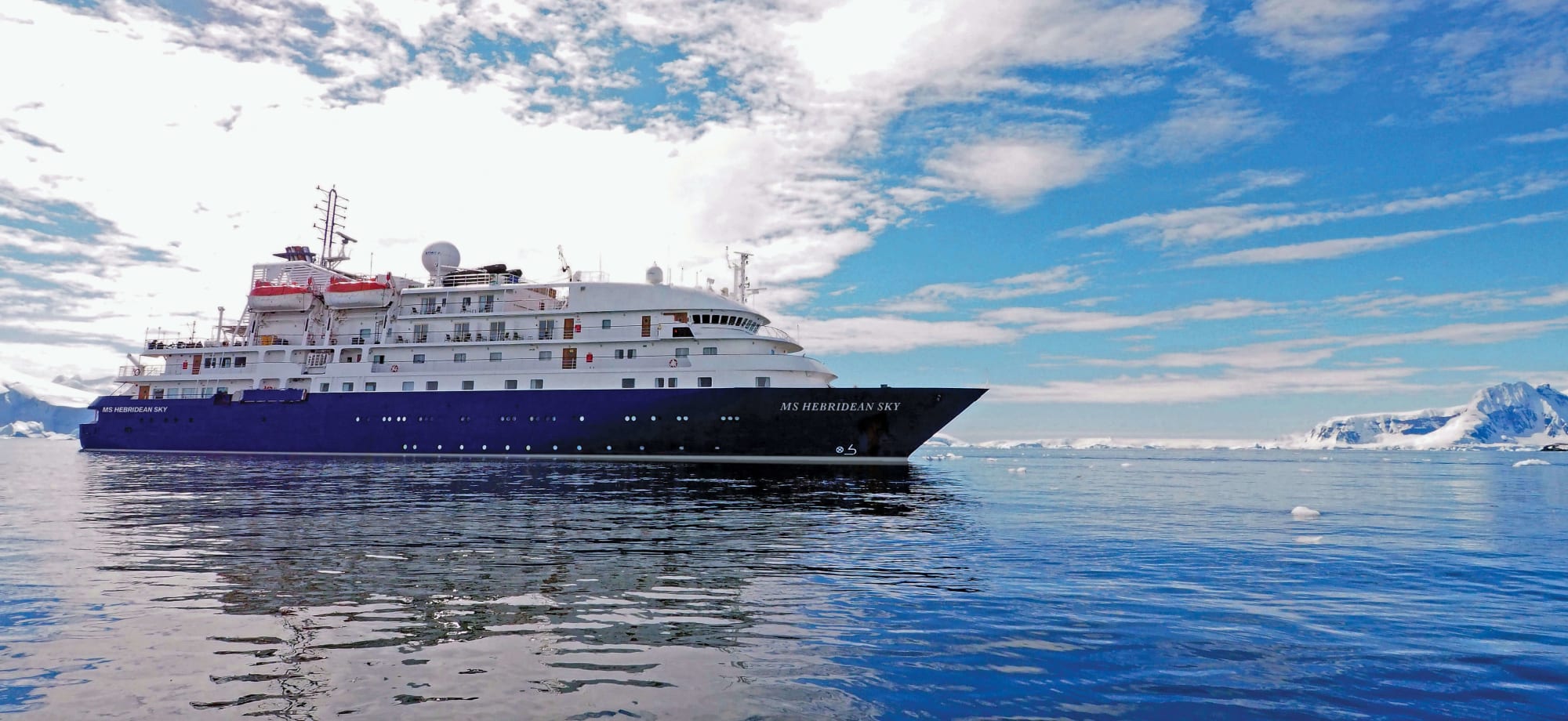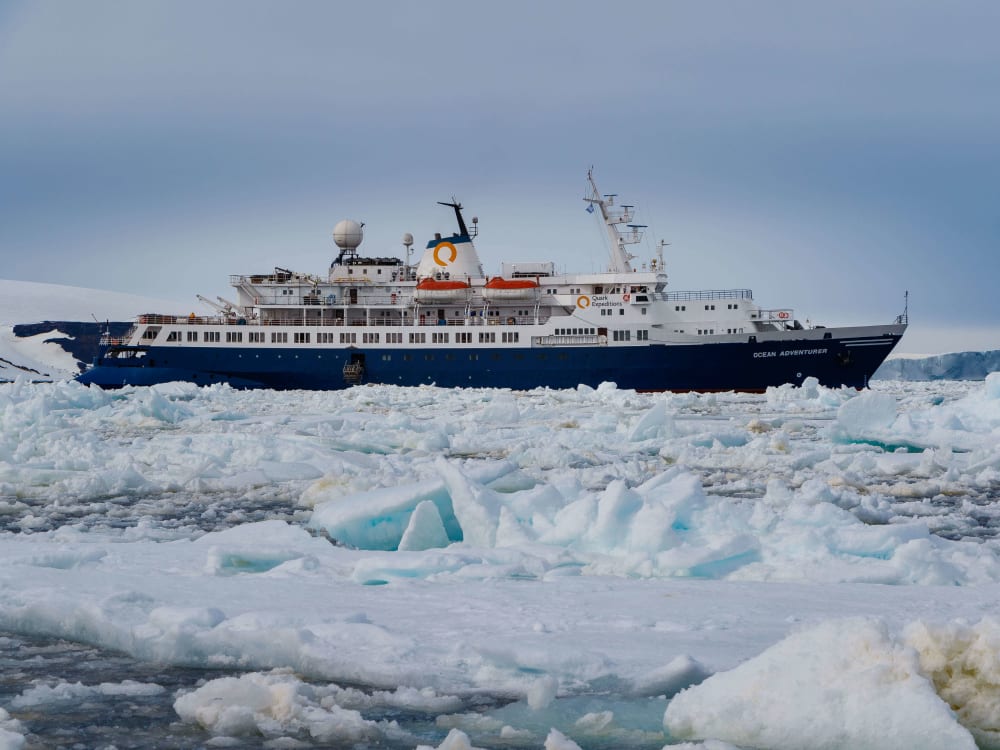Antarctica Wildlife & Whale Watching
Tailor made from £8,699 per person
14 days
South Shetland Islands, Antarctic Peninsula, Gerlache Strait
Tailor made from £8,699 per person
 14 days
14 days
 South Shetland Islands, Antarctic Peninsula, Gerlache Strait
South Shetland Islands, Antarctic Peninsula, Gerlache Strait
Trip Itinerary
Please select any day below to view that destination
- Complimentary Pre-Arrival Day
- Day 1 – Arrival in Ushuaia
- Day 2 – Embarking on your Antarctica Cruise
- Day 3 – Cruising the Drake Passage
- Day 4 – Cruising the Drake Passage
- Day 5 – Exploring the South Shetland Islands
- Day 6 – Exploring the South Shetland Islands
- Day 7 – Exploring the Antarctic Peninsula
- Day 8 – Exploring the Antarctic Peninsula
- Day 9 – Exploring the Gerlache Strait
- Day 10 – Exploring the Gerlache Strait
- Day 11 – Exploring the Gerlache Strait
- Day 12 – Cruising the Drake Passage
- Day 13 – Return to Ushuaia
- Day 14 – Departure from Ushuaia
Ready to book your adventure?
For a free and no obligation quote please just tell us a bit about you and your trip, and one of our Travel Specialists will be in touch!
Participate in research on humpback whales with a leading research organisation
Leave your mark on the world of the white continent with an Antarctica wildlife and whale-watching holiday with a twist – you’ll be participating in ocean research and a study on marine mammals.
You’ll join a whole team of scientists on a mission to discover how and why humpback whales and other species migrate thousands of miles to feeding grounds in the Southern Ocean, learning about how these creatures find krill and how global warming is impacting the distribution and volume of krill, which in turn affects whale populations.
Look out for these giant mammals as you cross the Drake Passage, island-hop around the South Shetland Islands and step foot on the Antarctic Peninsula. You’ll have the full Antarctic cruise experience, plus regular polar activities, all whilst tracking whales by collecting data and assisting the organisation’s studies.
This unique Antarctica whale-watching and wildlife expedition is a truly once-in-a-lifetime experience, which sees you contribute to conservation, aid ocean research efforts, and understand first-hand the impacts of climate change and global warming on the health of our oceans.
What's Included:
- Arrival & departure transfers
- Cruise ship accommodation (full board) & accommodation in Ushuaia (breakfast provided)
- Professional local staff with fair salaries
- Zodiac excursions with the expedition team
- Lectures & educational programmes onboard
- Waterproof boots
- Expedition parka
Trip Itinerary

Days 1 - 2: Ushuaia
Complimentary Pre-Arrival Day
If you’d like a little more time to unwind after a long journey to Ushuaia, there is the option available for a complimentary pre-arrival day in the city, which won’t impact your Antarctica trip.
Spend an extra night in the Arakur Resort and Spa, a luxury hotel perched on a natural balcony with panoramic views of the city and surrounding landscapes. Take a soak in the spa facilities, explore the town and take an extra day to combat any jetlag, leaving you refreshed and ready for your Antarctica adventure.

Day 1 – Arrival in Ushuaia
You’ll fly into Ushuaia, Argentina, the world’s most southerly city and the gateway destination for Antarctica cruises. From the airport, you’ll take a private transfer to your hotel, and there’s an option to attend an evening briefing to meet your fellow cruise passengers and ask any questions you may have.
Spend the rest of your day exploring the city, which has its own amazing natural attractions in Tierra del Fuego National Park, stunning mountain and coastal scenery, as well as delicious, freshly-caught seafood. We highly recommend dishes such as king crab, sea bass, and mussels.

Day 2 – Embarking on your Antarctica Cruise
After breakfast at your hotel, you can spend the morning at your leisure in Ushuaia. Visit the city’s museums, pick up souvenirs such as authentic Argentinean leather products, or simply relax in preparation for your Antarctica expedition.
In the afternoon, you’ll board your cruise ship and be greeted by the expedition team and crew. After a brief orientation on safety and an introduction to the ship’s facilities, you’re free to settle into your cabin and, later, enjoy dinner with the captain. As the vessel sails through the Beagle Channel, look out for your first wildlife sightings, including Magellanic penguins, rock cormorants, and sea lions.
View Accomodation Ideas
Days 3-4: Drake Passage
Day 3 – Cruising the Drake Passage
Leaving the channel behind, you’ll cross the Drake Passage over to Antarctica, a trip that usually takes at least a day, but sometimes two. However, before you even reach the great white continent, your Antarctica wildlife and whale-watching holiday has already begun.
The expedition team will accompany you out on the deck and on the bridge to look out for pods of whales and dolphins, which can be seen travelling south in these waters. When you’re not outside enjoying the scenery, you can enjoy talks and presentations from the team, which cover everything from wildlife to history to the natural environment, to provide you with context for the expedition ahead.

Day 4 – Cruising the Drake Passage
At the start of your Antarctica whale-watching and wildlife cruise, the onboard team will present an overview of their goals and methods for studying marine mammals.
There’s also an opportunity to participate in citizen science; taking part in birdwatching activities to help collect information about Antarctica’s seabird populations, as well as taking salinity samples and weather data.
Once the ship has crossed the Antarctic Convergence, you’ll notice a distinct drop in temperature as the cruise enters the waters of the Southern Ocean. Depending on weather and sea conditions, you’ll reach the South Shetland Islands by the evening. Keep an eye out for pelagic whales as the ship approaches the nutrient-rich waves of the Continental Shelf.

Days 5-6: South Shetland Islands
Day 5 – Exploring the South Shetland Islands
Having crossed the Drake Passage, you’ve arrived at the South Shetland Islands, an archipelago that lies around 120 kilometres off the coast of the Antarctic Peninsula. You’ll island-hop around the region, spotting wildlife as you go, as well as the several research stations run by various countries.
Islands of interest include Half Moon Island, an Important Bird Area (IBA) noted for its breeding colony of south polar skuas; Livingston Island, known for its ice cliffs and ice formations; and Deception Island, the horseshoe caldera of an active volcano, which raises sea temperatures and makes this area a popular spot for an Antarctic swim, if you’re feeling brave enough.

Day 6 – Exploring the South Shetland Islands
Today, you’ll continue your exploration of the South Shetland Islands. For the best Antarctic whale watching in the region, you’ll head to Bransfield Strait, which was once the site of a whaling station, but now lies abandoned. The rich waters offer great opportunities for sightings of humpbacks.
These magnificent giants can reach up to 52 feet in length and weigh up to 33 tons. Humpbacks are noted for their distinctive appearance, including a “knobbly” head and long pectoral fins, as well as their complex song, which is only sung by the males. This species of whale is known for majestic breeching and spending a lot of time at the surface, making humpbacks one of the best species to observe in whale-watching activities.
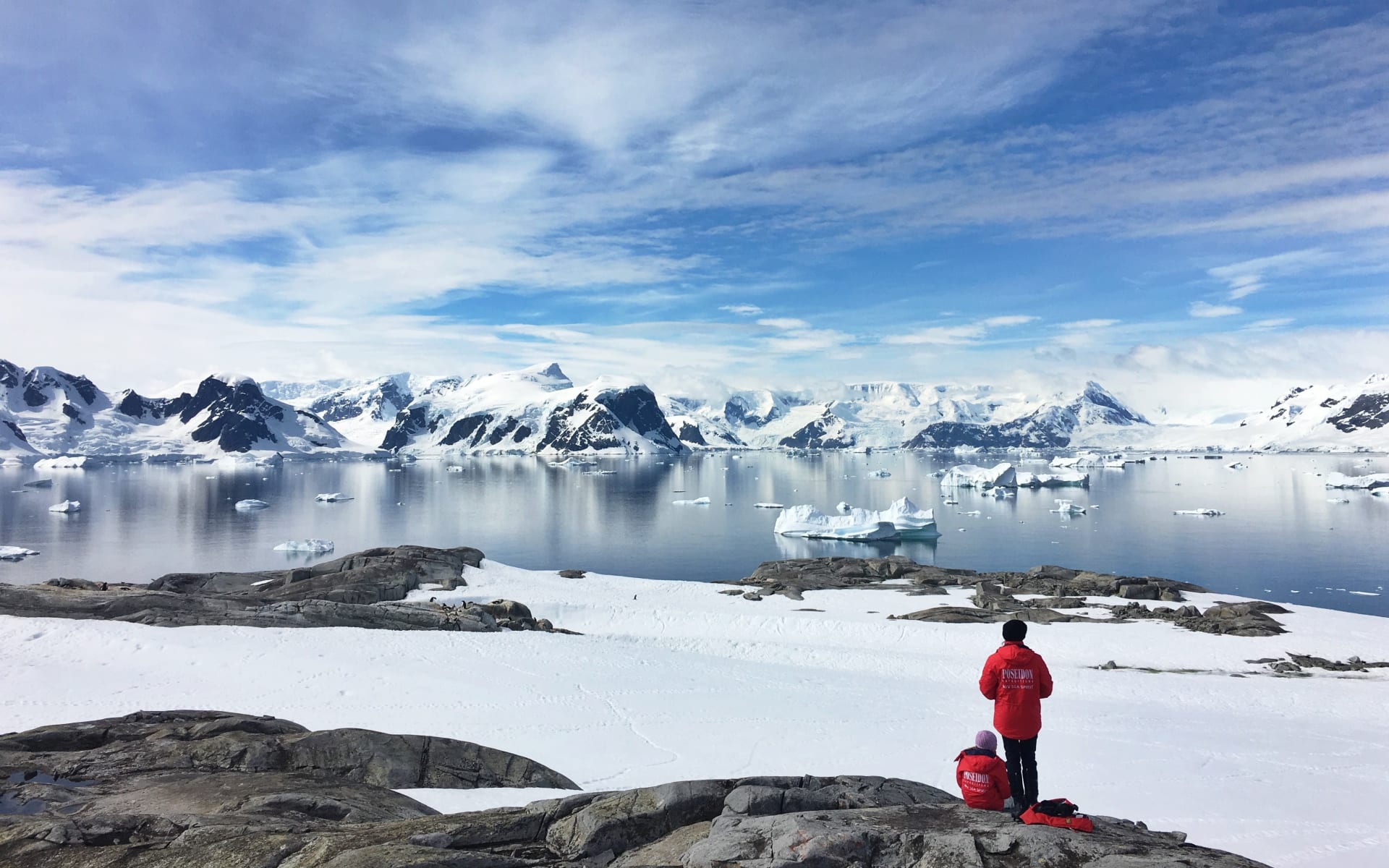
Days 7-8: Antarctic Peninsula
Day 7 – Exploring the Antarctic Peninsula
Heading further south, you’ll voyage down the west coast of the Antarctic Peninsula, the northmost part of the mainland of Antarctica and the most prominent peninsula on the continent at 1,300 kilometres in length. With trips ashore, you’ll be able to step onto the mainland and leave your footprints on the least-visited continent.
Your itinerary in this region will be more flexible, according to weather limitations, ice in the surrounding waters and ocean conditions. The team will also use information on previous whale sightings for more whale-watching opportunities, taking you to some of the less-visited regions around the peninsula.

Day 8 – Exploring the Antarctic Peninsula
Of course, humpback whales are not the only creatures which call Antarctica home. Despite harsh conditions, the continent is home to many species. Visit penguin rookeries for a chance to see chinstrap, gentoo and Adélie penguins; observe wallows of Weddell, crabeater and leopard seals; then look up for birdwatching to spot black-browed, light-mantled sooty and wandering albatross.
The albatross is incredible to watch in flight, its huge wings spread as the bird soars across the ocean with little exertion. Feeding on squid, fish and krill, they prefer to nest on remote, oceanic islands, making a sighting of these feathery giants a rare treat for keen birders. All 22 species of albatross are sadly decreasing in numbers, and three species have a status of critically endangered.

Days 9-11: Gerlache Strait
Day 9 – Exploring the Gerlache Strait
Heading even further south, the expedition will venture into the Gerlache Strait, its channels and islands. This scenic region is home to dramatic landscapes and an abundance of wildlife. At Neko Harbour, you’ll sail past giant glaciers, in the Lemaire Channel, you’ll cruise through still waters filled with drifting bergs and at Paradise Bay, you’ll uncover huge whale bones from the 1920s whaling era, as well as colonies of gentoo penguins.
The gentoo is a penguin species first spotted in the Falkland Islands in 1781. You can recognise the species by its wide white stripe, which extends like a bonnet across the top of its head. The species is also noted for its loud, trumpeting call, which the bird emits with its head thrown right back.

Day 10 – Exploring the Gerlache Strait
During Antarctica’s summer months, humpbacks aren’t the only whale species to frequent these waters - minke whales are also common. The southern minke whale or Antarctic minke whale was once ignored by the whaling industry due to its diminutive size (for a whale) and its low oil yield. This meant that the species managed to maintain a large population and is one of the most abundant baleen whales in the world today.
The Antarctic minke is one of the smallest baleen whales, reaching up to 39 feet in length and weighing up to 11.5 tons. Females usually grow slightly larger than males, and the species can be recognised by their dark grey and white colouring, as well as their curved and upright dorsal fins.

Day 11 – Exploring the Gerlache Strait
Another favourite spotting around the Antarctic Peninsula is the orca, often called the killer whale. Instantly recognisable by their black and white colouring, these marine mammals can reach up to 32.2 feet in length and weigh up to 11 tons. Unlike baleen whales, orcas prefer meatier prey, such as seals, fish, squid, and even minke whales.
One of the world’s most formidable predators, orcas hunt in packs and are also one of the largest carnivores on the planet. Found in various oceans, not only in the Antarctic region, little is known about their conservation status and the mystery of their varied diet.
Day 12: Drake Passage
Day 12 – Cruising the Drake Passage
After 10 days of Antarctic whale-watching and wildlife observation, it’s time to head back north. In review of the data collected and what you’ve learned, the team aboard the expedition vessel will take part in a discussion, where you can listen to their findings and ideas, with Antarctic scenes passing by just outside the window – a truly unique Antarctic cruise experience.

Day 13 – Return to Ushuaia
Following the west coast once more, then navigating through the Shetland Islands, the cruise ship will leave the mainland of Antarctica behind; crossing the Drake Passage and the Antarctic Convergence on its way back to Ushuaia. Be sure to keep your eyes peeled for whale and wildlife sightings on the journey back to base.
Spend your final day and night aboard your Antarctica cruise swapping stories with fellow passengers, sharing photos and discussing topics such as whale conservation, the environment and the growing concerns of climate change with the expedition’s team of experts in your final briefing.

Day 14: Ushuaia
Day 14 – Departure from Ushuaia
Sailing back up the Beagle Channel, you’ll arrive back in Ushuaia sometime during the night or early the next morning. After enjoying your breakfast on the ship, you’ll disembark and step foot back onto South American soil. From here, you can choose to spend more time in Ushuaia or head to the airport to catch a flight home, or to continue with the next leg of your adventure.
Your Antarctica whale-watching and wildlife cruise has come to an end, but your contribution to marine mammal studies will continue to make progress. Look out for the results to be compiled and published, knowing that you have participated in a significant scientific expedition to Antarctica.
Why Wayfairer
Wayfairer is committed to providing holidays with a responsible travel focus, by working with local suppliers and ships that share our dedication to responsible and sustainable tourism. The operator of the Hebridean Sky Ship understands just how important it is to protect Antarctica, and as a result, each year, they support charities that protect whales and dolphins in the Antarctic waters, along with organisations working to preserve the historical heritage of the region. They do this by running onboard auctions, as well as sponsoring an annual local music festival.
This Antarctica voyage offers a unique chance for travellers to contribute to marine mammal studies, conservation, and ocean research, along with gaining a first-hand understanding of the impacts climate change and global warming are having on our oceans.
All staff mentioned in our itineraries are paid a fair wage, from the drivers to the expedition team. We also encourage you to make the most of the expedition specialists aboard your Antarctic cruise, who can provide you with in-depth information about the region, its history, the environment, and conservation.

More Antarctica travel inspiration from Wayfairer customers and travel specialists

15 Most Beautiful Places To Visit in Vietnam
April 14, 2023

Where to Travel Based on Your Chinese Zodiac
March 24, 2025
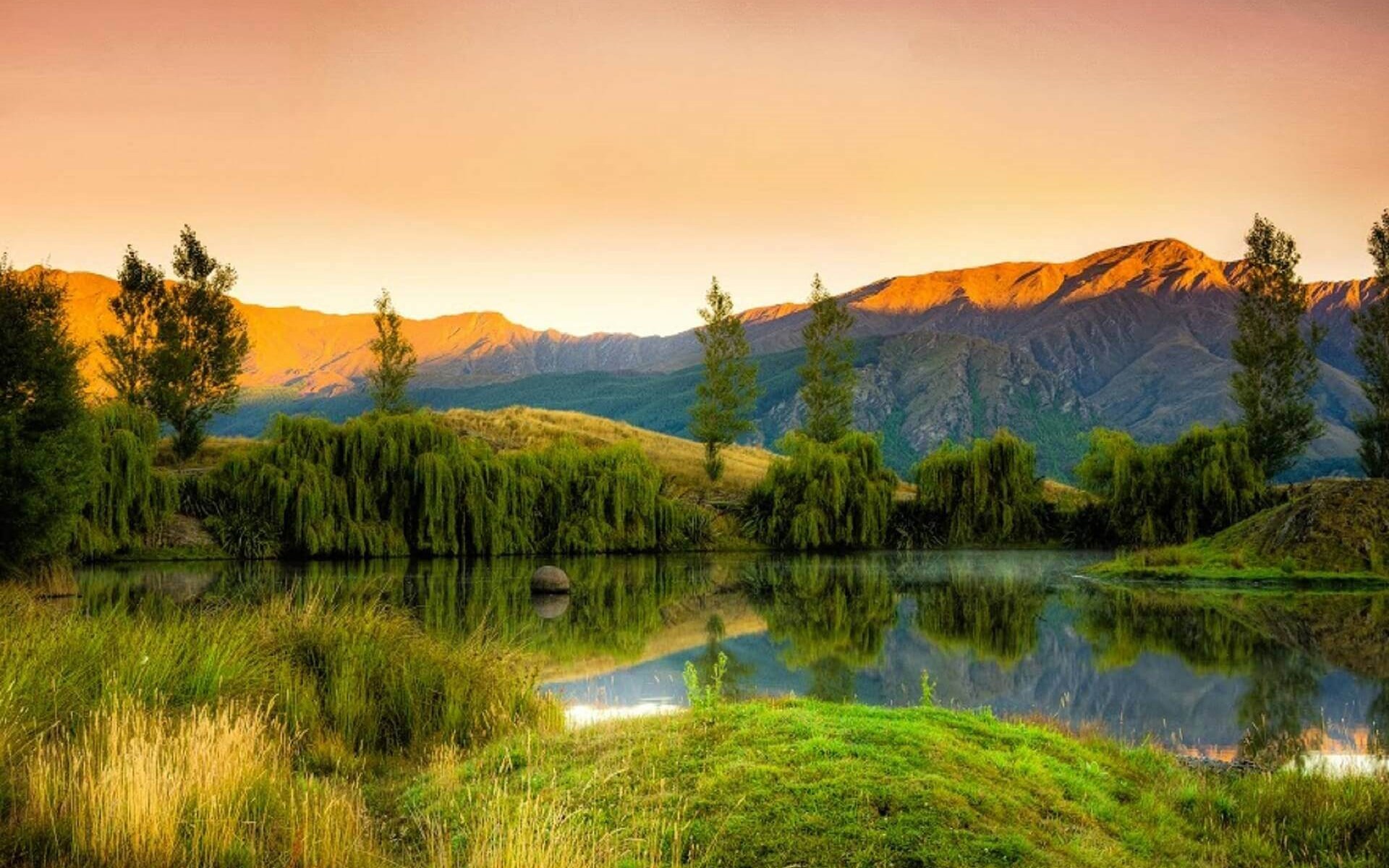
Top 40 Lord of the Rings Filming Locations in New Zealand
April 14, 2023
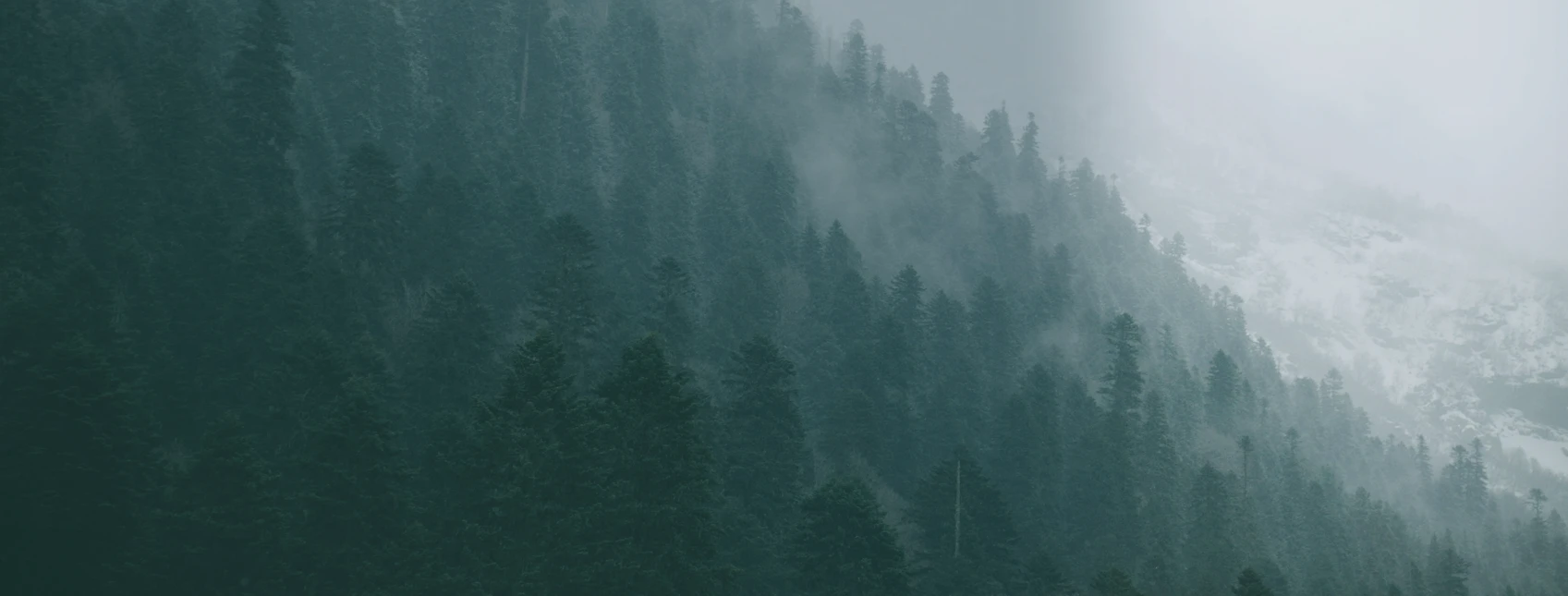
Sign up to our newsletter
For more travel inspiration delivered straight to your inbox just fill in your details here





